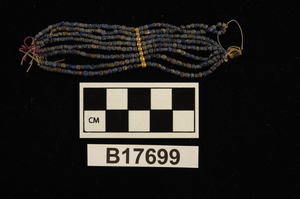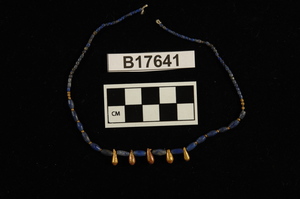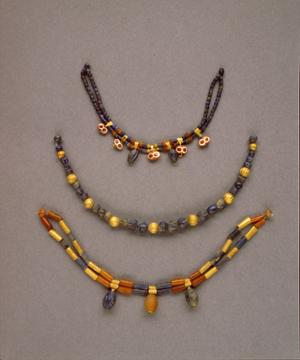Ur, Iraq
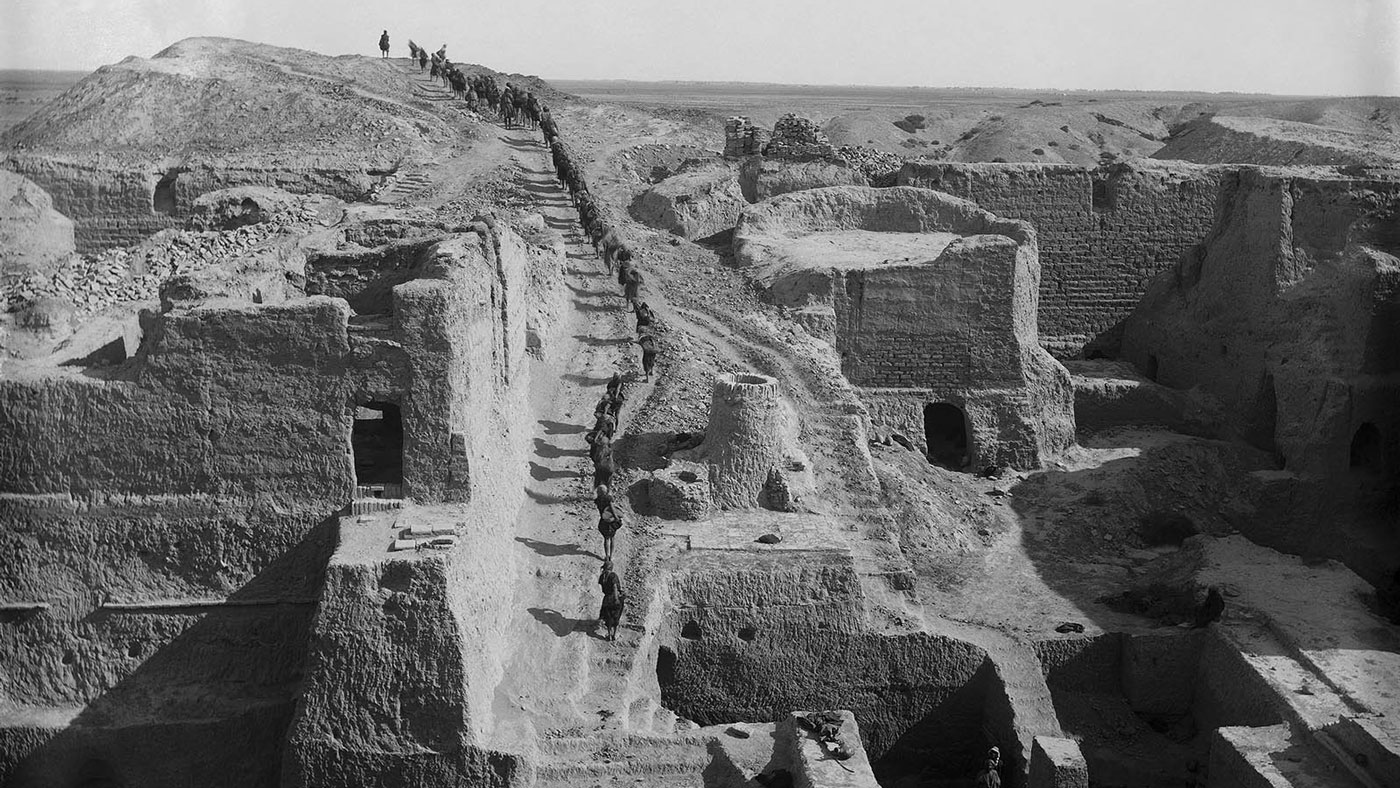
Located in southern Iraq, near the former northern limits of the Persian Gulf, Ur was one of the most famous archaeological excavations—along with Tutankhamun’s tomb in Egypt—during the early 20th century. Frequently described in the popular press, the work at Ur brought the magic of archaeology to life, particularly by tying the discoveries into familiar biblical stories. Between 1922 and 1934, the Joint Expedition of the British Museum and the Penn Museum was directed by C. Leonard Woolley and uncovered some of the most well-known and celebrated art from ancient Mesopotamia. These finds were divided between the two partner institutions (25% each) and the Baghdad Museum in Iraq (50%).
- Object[575]
- near eastern[575]
- amulet[1]
- applique[17]
- axe[1]
- bar[1]
- bead[28]
- beads[24]
- belt[2]
- bowl[2]
- bracelet[5]
- brim[9]
- bull head[1]
- cape (clothing)[32]
- chain[5]
- chisel[3]
- choker[7]
- cloak beads[1]
- coil fragment[1]
- comb (hair - grooming tool)[4]
- cosmetic container[1]
- cuff[4]
- cylinder seal[3]
- dagger[2]
- diadem[87]
- diadem fragment[1]
- drinking tube[3]
- earring[69]
- fillet[2]
- finger ring[16]
- flower[10]
- flute[1]
- foil fragment[1]
- frontlet[5]
- frontlet ring[1]
- frontlet rings[1]
- garment pin[8]
- garter[1]
- hair comb[5]
- hair pin[6]
- hair ribbon[15]
- hairring[25]
- jewelry[15]
- jewelry fragment[5]
- leaf[3]
- lyre fragment[1]
- metal fragment[4]
- ornament[3]
- ostrich egg[1]
- pendant[54]
- pin[2]
- pin fragment[1]
- pin head[2]
- ribbon[19]
- ring[6]
- rosette[1]
- saw handle[1]
- scepter[1]
- seal cap[3]
- spear[2]
- spouted bowl[1]
- statue[1]
- string of beads[156]
- token[1]
- tweezer[1]
- vessel handle[1]
- whetstone[1]
- wire[1]
- wreath[14]
- akkadian[1]
- archaic[1]
- early dynastic iii[125]
- early dynastic iiib[1]
- kassite[1]
- larsa[1]
- sargonic[6]
- ur iii[1]
- 7-8m loose in cemetery pgs[1]
- a.h., g 306[1]
- c. 14, tw[1]
- from deepest level front of zig[1]
- g 137, a.h.[1]
- p.g. 1068?[1]
- p.g. 963[1]
- pg 1027[1]
- pg 1054[2]
- pg 1054 c[1]
- pg 1054, chest of central figure in domed chamber[1]
- pg 1054, domed structure[1]
- pg 1054, head of central person in the domed structure[1]
- pg 1054-c[1]
- pg 1054c[2]
- pg 1116[1]
- pg 1133[6]
- pg 1157/23[2]
- pg 1186[1]
- pg 1195[2]
- pg 1234[3]
- pg 1236, chamber b.[1]
- pg 1237[1]
- pg 1237, body 64[2]
- pg 1237/11[1]
- pg 1237/16[9]
- pg 1237/2[1]
- pg 1237/22[3]
- pg 1237/30[2]
- pg 1237/4[4]
- pg 1237/40[13]
- pg 1237/45[1]
- pg 1237/47[3]
- pg 1237/51[1]
- pg 1237/59[1]
- pg 1237/64[12]
- pg 1237/64 (from g or j)[1]
- pg 1237/67[14]
- pg 1237/69[2]
- pg 1237/70[5]
- pg 1237/8[10]
- pg 1276[1]
- pg 1284[5]
- pg 1316[2]
- pg 1329[1]
- pg 1335[2]
- pg 1401[3]
- pg 1464 ?[2]
- pg 1618[1]
- pg 1648[6]
- pg 1651[1]
- pg 1845, burial h[2]
- pg 1846, burial c[1]
- pg's -5 metres[1]
- pg/537 was later found to be part of pg/580.[1]
- beech leaf[1]
- bull[4]
- bull head[1]
- child[1]
- date palm[12]
- enkidu[1]
- female figure[1]
- flower[26]
- fly[2]
- fruit[17]
- gilgamesh[1]
- goat[3]
- goddess[1]
- introduction[1]
- leaf[1]
- leaves[17]
- lion[1]
- mother[1]
- ostrich egg[1]
- ram[3]
- rosette[19]
- rug beater[15]
- stag[2]
- tree[1]
- wheat stalk[6]
- woman[1]
- agate[15]
- amethyst[2]
- aragonite[1]
- bitumen[33]
- bone[1]
- carnelian[133]
- copper[7]
- copper alloy[7]
- diorite[2]
- electrum[1]
- frit[1]
- glass[1]
- gold[575]
- ivory[1]
- jasper[2]
- lapis lazuli[230]
- limestone[3]
- marble (stone)[2]
- ostrich egg shell[1]
- paste[2]
- quartz[6]
- rock crystal[1]
- sandstone[1]
- sard[1]
- shell[8]
- silver[44]
- soapstone[1]
- steatite[1]
- stone[3]
- turquoise[1]
- wood[2]
- actual citation[193]
331 - 360 of 575 Records
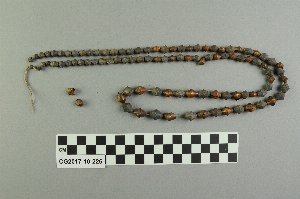
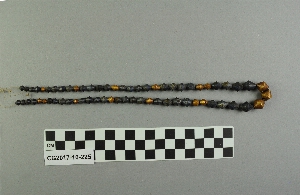
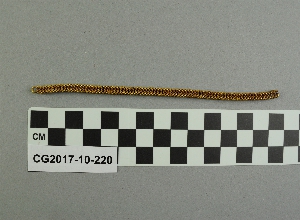
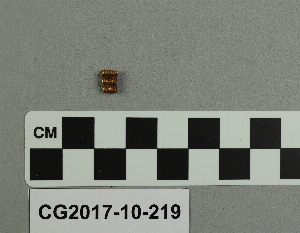

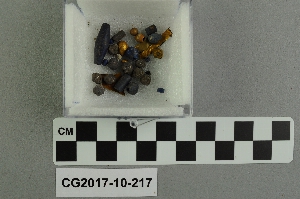
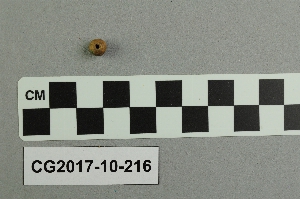
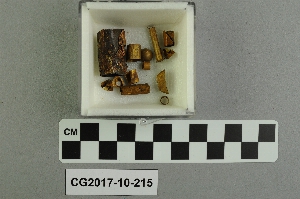

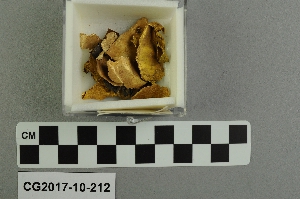
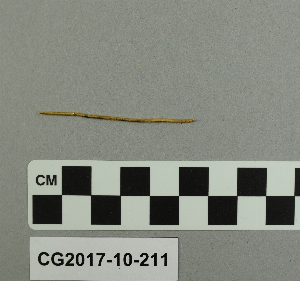
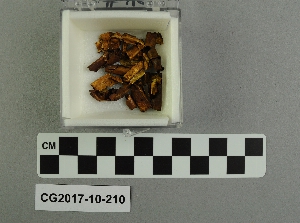


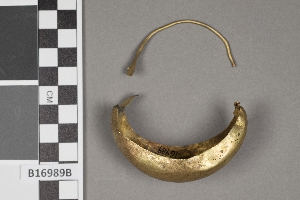
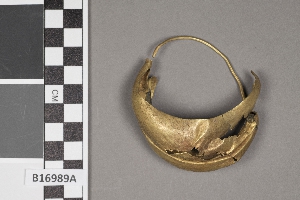
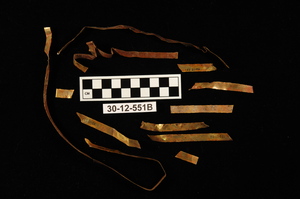
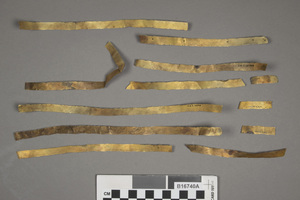
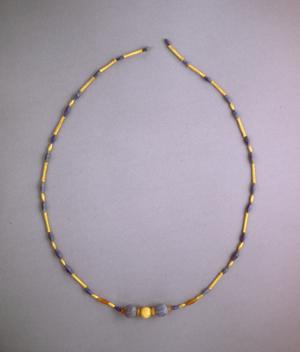
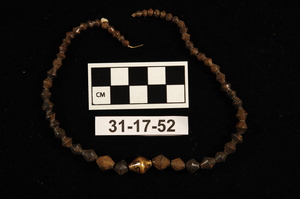
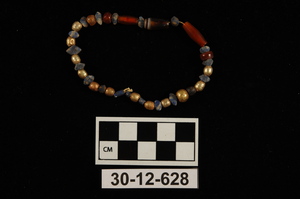

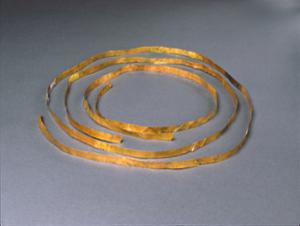
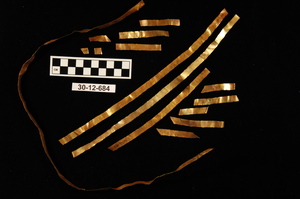
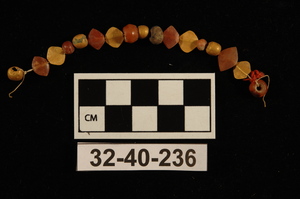


331 - 360 of 575 Records


